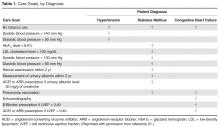Role and Responsibilities of a Care Guide
Care guides are individuals without formal medical training whose general activities include:
- fostering a longitudinal relationship to encourage patients to take control of their chronic illness;
- educating patients about the considerable benefits of best practice treatment;
- communicating with patients, families and providers to keep the entire care team, including the PCP, focused on meeting care guidelines;
- supporting medication and treatment adherence;
- identifying and facilitating resolution of barriers to quality care;
- facilitating referrals to extended care team members and introducing patients to appropriate services or resources within the clinic, health system and/or community they live or work in.
How do care guides differ from other personnel used as care managers? Care guides can explain the value of meeting standard goals, but unlike nurses cannot answer clinical questions. Care guides and medical assistants have similar salaries but care guides have higher educational requirements, less clinical training, and no competing duties in clinic. Like community health workers, care guides are culturally similar to the patients they serve, but are located in the clinic. Care guides were recruited for specific traits and competencies: an outgoing personality, the ability to engage easily with people of different ages and backgrounds, and a second language where needed (eg, Spanish and Somali in the pilot study) [20].
Implementation Trial
A research team conducted a large randomized controlled trial [21] to test the effectiveness of introducing lay health care workers into primary care practices to improve chronic disease care. They deployed 12 care guides in 6 diverse (rural, suburban, urban) primary care clinics in Minnesota. Patients with hypertension, diabetes or congestive heart failure were eligible. The main objective for the care guides was to help assigned patients and their PCPs achieve recommended care goals, which were based on national standards ( Table). Care guide workstations were located in clinic waiting rooms to facilitate face-to-face interactions with patients, providers, and nurses. Care guides asked patients to sign a contract that was scanned into the electronic health record agreeing to work toward and maintain their disease-specific goals. Care guides met with providers and sent them electronic messages as needed. Care guides and patients mutually decided how often and how (face-to-face or by telephone) they would contact each other. Quarterly reports about care goals achieved and not achieved were printed for patients and delivered electronically to PCPs.The study recruited 2135 patients. Both groups had an increased percentage of goals met at the end of the 1-year study compared to baseline. Care guide patients met a larger percentage of possible care goals at 1 year than did usual care patients (odds ratio, 1.31; 95% confidence interval, 1.16–1.47; P < 0.001). Care guide patients reduced unmet goals by 30.1%, usual care patients by 12.6%. The difference in outcomes between the 2 groups was minimally affected by differences in the times of final measurement for each goal. The benefit of working with a care guide was not different across demographic categories of age, sex, race, language, insurance, or education. In this study, care guides helped a broad range of patients who were meeting many goals at baseline and who were cared for by providers already receiving regular quality-improvement feedback. Estimated cost was $286 per patient per year.

